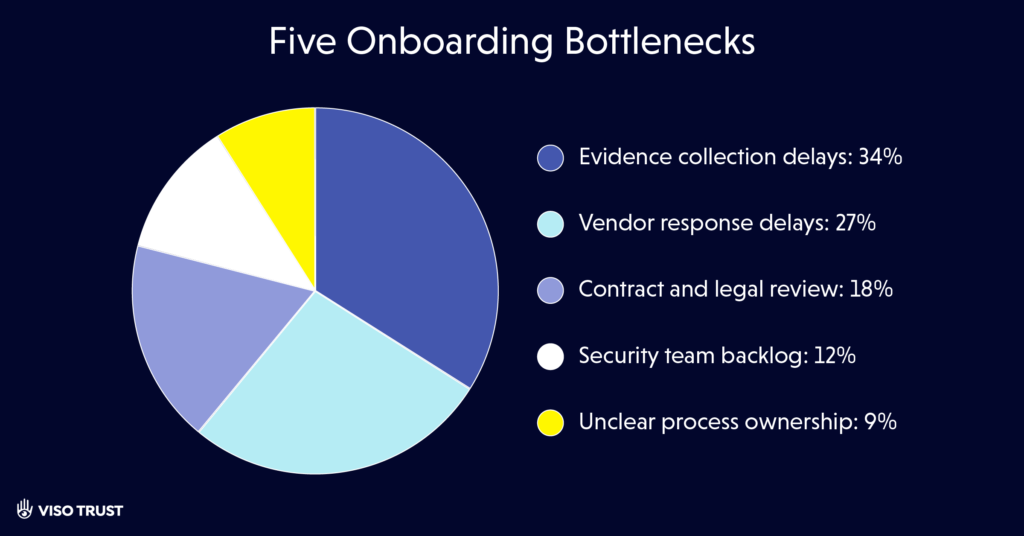Third-party risk management automation
Most third-party risk programs are still weighed down by manual work. Teams chase vendor security questionnaires, copy responses into spreadsheets, and compile vendor risk assessment reports that are outdated almost as soon as they’re finished. Reviews drag on for weeks, slowing down procurement and leaving gaps in oversight. Meanwhile, boards and regulators expect continuous proof that vendors are secure and compliant.
That’s where TPRM automation comes in. By using automated vendor risk assessment tools and AI-assisted evidence collection, organizations can replace repetitive tasks with real-time insights. Instead of manual back-and-forth, third-party risk management automation streamlines evidence collection, generates consistent reports, and provides always-current visibility into vendor risk.
The outcome is faster onboarding, stronger compliance, and the confidence that your supply chain is being managed with the same rigor as your own security program.
What is third-party risk management automation?
Third-party risk management automation uses AI and workflow tools to replace manual vendor assessment and monitoring tasks. Instead of security teams chasing questionnaires and piecing together spreadsheets, automated third-party risk assessment tools collect evidence, score vendors against common frameworks, and provide continuous monitoring—without requiring daily staff intervention.
This kind of risk management automation reduces the lag between vendor onboarding, assessment, and reporting. Teams get timely insights into vendor posture, rather than waiting weeks for manual reviews to wrap up. Automated workflows also standardize processes like distributing AI-assisted evidence requests, mapping responses to compliance frameworks, and generating cybersecurity risk assessment reports for executives or regulators.
The result is more than efficiency. With TPRM automation solutions, organizations gain a scalable way to manage hundreds or thousands of vendors, ensure consistent oversight, and deliver defensible reporting. Put simply, automated third-party risk management transforms TPRM from a slow, reactive task into a proactive, continuous practice.
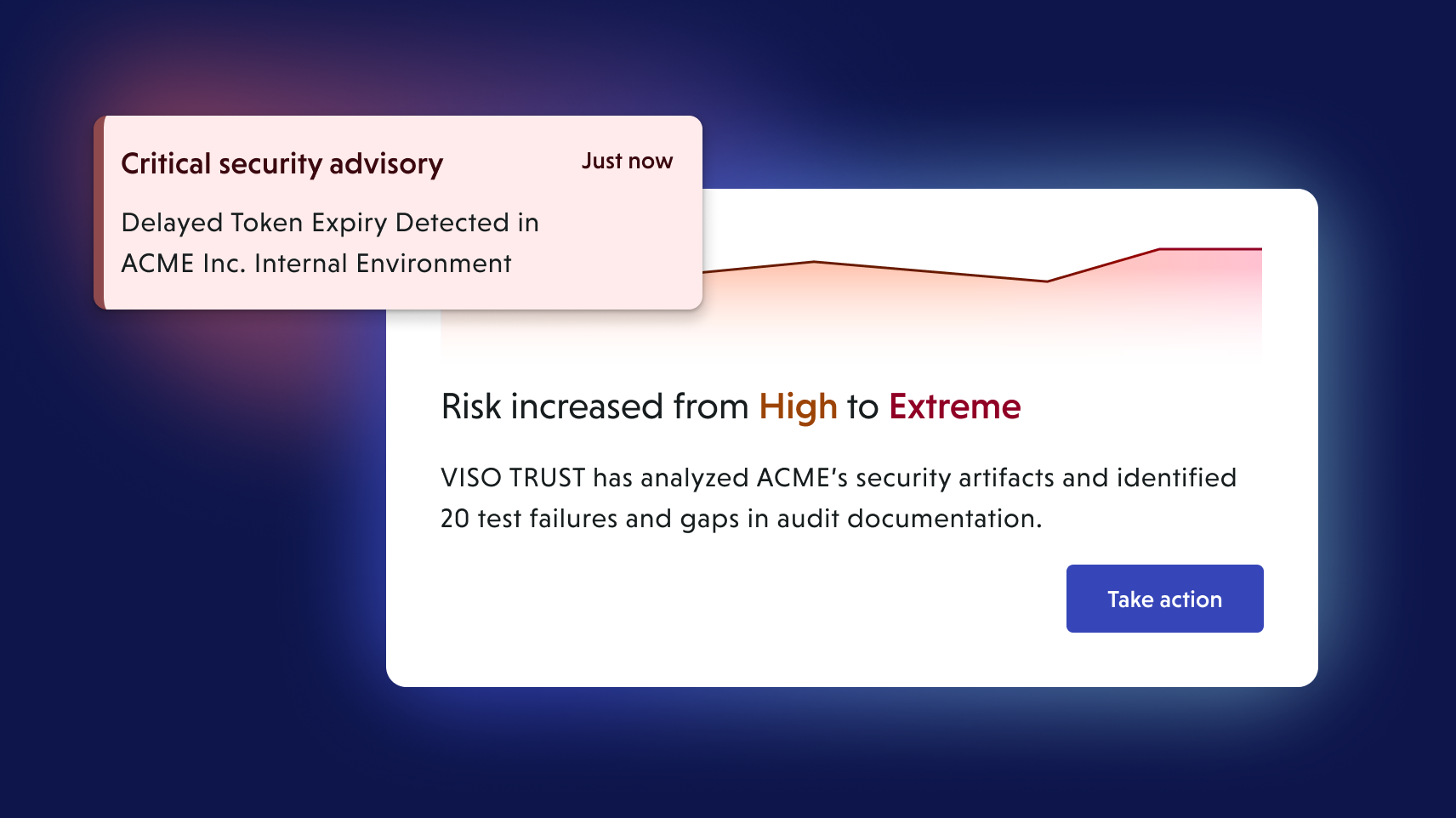
Why automation matters for TPRM
Heavy manual effort
Teams lose valuable time chasing vendor security questionnaires, collecting artifacts, and compiling spreadsheets—only to end up with reports that age quickly.
Gaps between reviews
Point-in-time assessments can’t keep up with today’s risk landscape. Breaches, expired certifications, or compliance issues often go undetected until the next cycle.
Fragmented vendor communications
Scattered emails, portals, and spreadsheets create friction that slows down vendor response rates and increases review fatigue.
Audit and oversight pressure
Boards, regulators, and customers expect proof of continuous due diligence. Without a consistent, traceable process, demonstrating oversight across hundreds of vendors is a constant struggle.
Growing vendor ecosystems
As companies expand, so do third- and even fourth-party relationships. Manual processes don’t scale, leaving security teams stretched thin.
Types of risks in third-party risk management
Automation isn’t just about saving time—it’s about improving visibility across all the ways vendors can introduce risk. Effective third-party risk management automation should address three core categories:
Cybersecurity risk
Vendors can become attack vectors if their systems are breached or misconfigured. Exposed credentials, vulnerabilities, and incidents can ripple across your environment. Automated tools help by monitoring for threats in real time and surfacing issues without waiting for the next vendor security questionnaire.

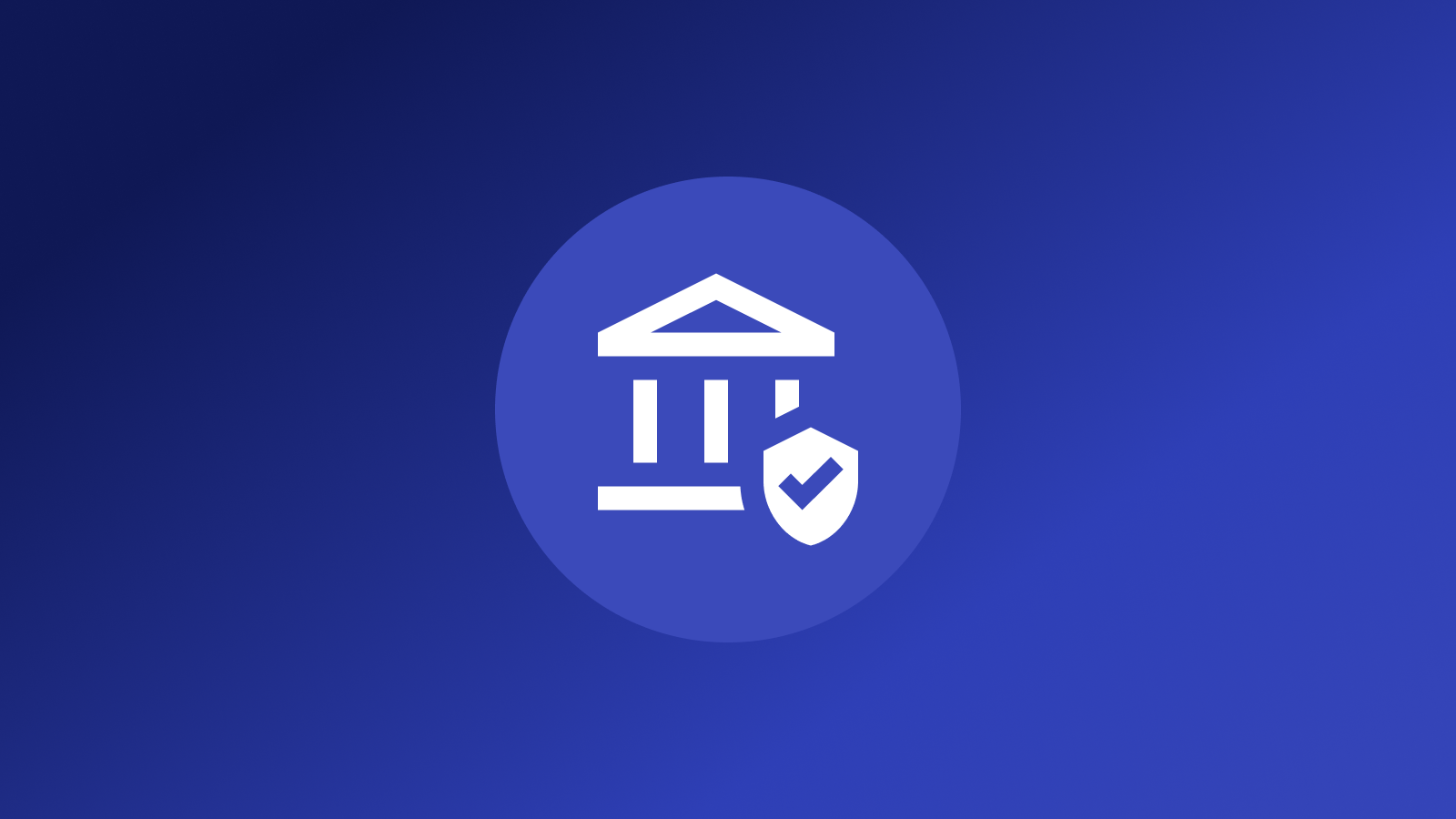
Compliance and regulatory risk
Vendors must maintain attestations like SOC 2, ISO 27001, HIPAA, or GDPR. If certifications expire or evidence is missing, your organization inherits that exposure. Automated vendor risk assessment tools map responses and evidence directly to frameworks, ensuring oversight is always up to date.
Operational and supply chain risk
Even secure vendors can fail if they experience outages, ownership changes, or dependencies on risky sub-processors. With vendor risk management automation, organizations can track these changes continuously and factor them into procurement or renewal decisions.

Together, these risk types shape the bigger picture of third-party exposure. By using automated third-party risk management to cover cyber, compliance, and operational dimensions, organizations can move from reactive problem-solving to proactive resilience.
Business outcomes of TPRM automation
The value of third-party risk management automation extends far beyond time savings. Organizations that adopt automation achieve:
faster vendor onboarding
with automated vendor assessments and always-current profiles that remove bottlenecks from procurement.
Reduced risk exposure
by detecting incidents sooner and remediating quickly through continuous, automated monitoring.
Consistent compliance oversight
with audit-ready evidence from automated third-party risk assessment tools, traceable across hundreds of vendors.
Greater efficiency
as repetitive tasks like chasing vendor security questionnaires or compiling reports are replaced by automated workflows.
Scalable resilience
that allows teams to manage thousands of vendors and even fourth-party relationships without adding headcount.
These outcomes shift vendor risk management automation from a tactical fix to a strategic enabler—driving agility, trust, and confidence across the business.
Best practices for implementing TPRM automation
Adopting third-party risk management automation isn’t just about buying a tool—it’s about building the right processes to support it. Whether you’re just starting out or looking to mature your program, these practices can help you succeed:
Start with clear objectives
Define what automation should solve: faster onboarding, stronger compliance oversight, or reduced manual work. Clear goals will guide your choice of TPRM automation solutions.
Automate questionnaires first
Manual vendor security questionnaires are a top bottleneck. Use AI-assisted evidence collection to distribute, score, and map responses directly to frameworks like SOC 2 or ISO 27001.
Standardize evidence collection
Set up workflows that pull vendor artifacts and compliance attestations into one system of record. This ensures audit readiness and traceability.
Integrate with existing tools
Strong automation doesn’t live in a silo. Connect your automated vendor risk management platform to procurement, ticketing, and monitoring systems so risk signals flow where work happens.
Scale oversight gradually
Roll out automated vendor assessments to your most critical suppliers first, then expand coverage to third- and fourth-party vendors as processes stabilize.
Track outcomes, not just activity
Measure the impact of automation in terms of time saved, faster procurement cycles, reduced audit prep, and fewer compliance gaps.
By following these practices, organizations can turn risk management automation into a durable advantage—freeing teams from repetitive tasks and delivering the oversight boards, regulators, and customers now expect.
How VISO TRUST enables TPRM automation
VISO TRUST helps teams automate vendor risk assessments and evidence collection with AI-assisted tools, high vendor response rates, and seamless integrations:
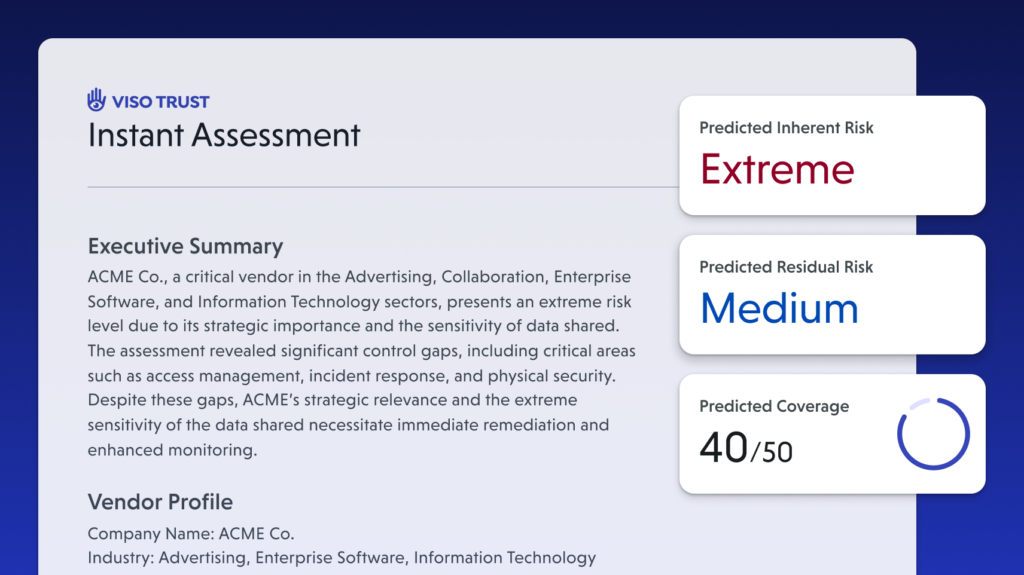
Automated third-party risk management
Send guided requests vendors can complete directly in the platform, cutting down on emails and back-and-forth.
AI-powered risk assessments
Combine public intelligence with vendor-submitted artifacts to produce rapid, evidence-backed scores you can trust.
Trigger-based workflows
When a risk changes or a certification expires, VISO TRUST automatically launches alerts and reassessments – no manual follow-up required.
Integrated continuous monitoring
Keep vendor profiles always current with monitoring data that flows directly into the risk record.
Board-ready reporting
Instantly generate Smart Summaries and program-wide metrics, eliminating hours of manual formatting before audits or board meetings.
Integration-ready
Streamline and automate complex workflows and decision-making across your entire enterprise stack – seamlessly integrating with tools like Jira, Coupa, ServiceNow, Archer, Slack, Okta, and thousands more.
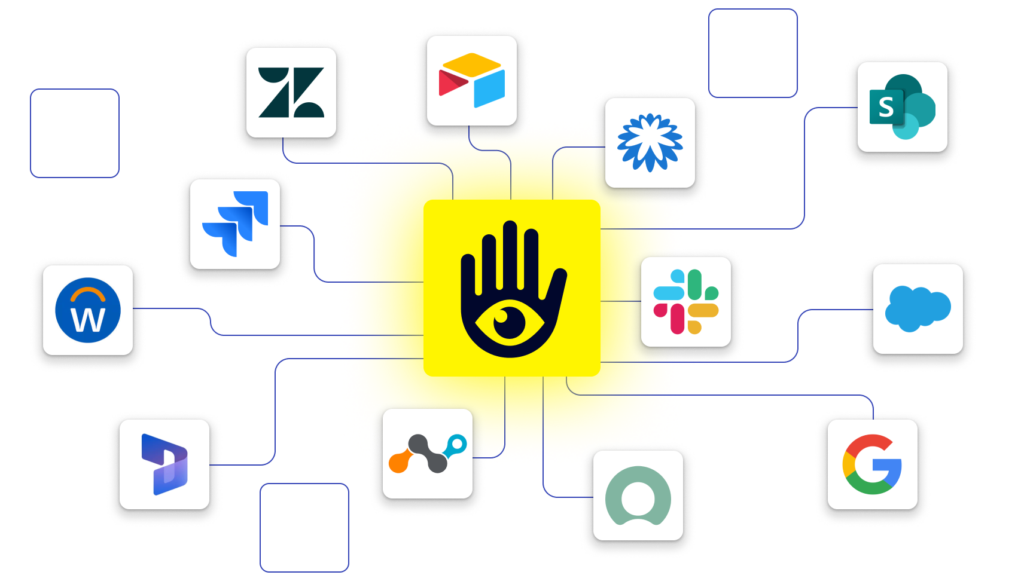
Benefits of TPRM automation with VISO TRUST
Faster vendor onboarding
Automated risk assessments in minutes instead of weeks.
Less manual effort
AI-assisted workflows handle evidence collection, scoring, and reminders.
Higher vendor engagement
A guided, user-friendly process drives a 98% vendor response rate and smoother collaboration.
Stronger compliance posture
Maintain an audit-ready trail of alerts, actions, and outcomes.
Scalable oversight
Confidently manage thousands of vendors and sub-vendors without adding headcount or overhead.

